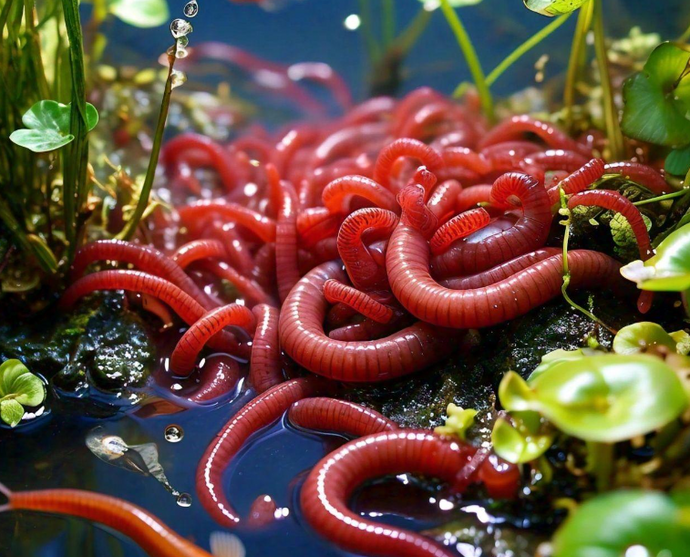Every Little Thing You Required to Know About Red Wigglers for Composting
Red wigglers, or Eisenia fetida, play an essential function in the world of composting, changing natural waste right into useful dirt changes. Their one-of-a-kind organic characteristics allow them to prosper in numerous conditions, making them an excellent selection for both beginner and seasoned composters alike. Understanding their requirements and benefits is critical for establishing an effective vermicomposting system. The procedure of establishing up a worm container and preserving it can position obstacles. To efficiently harness the capacity of these worms, one need to discover the complexities of their care and management.
What Are Red Wigglers?

(Lake James Bait)
Belonging To The United States and copyright, red wigglers are surface-dwelling organisms that prefer moist, warm habitats rich in breaking down organic issue. Their diet consists mostly of decaying plant product, food scraps, and other natural particles, which they eat and damage down successfully. As they absorb this material, they create nutrient-rich spreadings that boost dirt fertility.
Red wigglers are hermaphroditic, having both male and women reproductive body organs, and can replicate swiftly under ideal conditions. In general, red wigglers are essential contributors to the process of reusing natural waste into useful compost.
Advantages of Using Red Wigglers
Using red wigglers in composting systems provides many benefits that enhance both the effectiveness of waste monitoring and the top quality of the resulting compost. These worms, medically understood as Eisenia fetida, are especially efficient at breaking down raw material, transforming kitchen scraps and lawn waste into nutrient-rich garden compost at a sped up price.
Among the main benefits of using red wigglers is their capacity to eat big quantities of natural material, often refining their weight in food waste daily. This high intake rate leads to faster decay and reduces the volume of waste sent out to land fills. Additionally, the castings generated by red wigglers are abundant in vital nutrients, valuable microorganisms, and enzymes, making them an outstanding fertilizer for gardens and plants.
Furthermore, red wigglers grow in a variety of environments, making them versatile for both interior and outdoor composting systems - red wigglers. Their presence in a garden compost container aids to aerate the material, protecting against odors and promoting a healthy and balanced composting process. Overall, using red wigglers not just adds to efficient waste administration yet likewise supports lasting horticulture techniques via the manufacturing of top quality garden compost
(Worm Farms Near Me)
Establishing Your Worm Bin
To effectively establish a worm bin, it is crucial to select a proper container that satisfies the demands of red wigglers while supplying a conducive atmosphere for composting. A suitable bin can be made from plastic, timber, or steel, with a capacity of a minimum of 1 square foot for every single extra pound of worms.
Ensure the container has appropriate drain openings to stop excess dampness, as red wigglers grow in a wet, yet not waterlogged, atmosphere. red wigglers. The container ought to additionally be aerated to supply enough air flow, preventing anaerobic conditions that could damage the worms
A perfect place for the worm bin is a great, dark area, without direct sunshine and severe temperature levels, as red wigglers like a temperature series of 55 to 77 degrees Fahrenheit.
Before introducing the worms, prepare bed linen materials such as shredded newspaper, cardboard, or coconut coir, which will offer both habitat and food. Moisten the bed linen gently to produce an inviting environment for the worms. Lastly, think about placing a cover on the container to keep humidity and decrease insects, while guaranteeing it can be easily eliminated for maintenance.
Feeding and Care Standards
Feeding red wigglers is an important aspect of keeping a healthy and balanced composting system. These worms grow on a varied diet regimen, mostly made up of natural products such as fruit and use this link vegetable scraps, coffee premises, and smashed eggshells. It is vital to prevent feeding them meat, milk, and oily foods, as these can create unpleasant odors and bring in pests.
When introducing food to your worm container, cut or shred materials right into smaller sized items to promote quicker disintegration. Start with percentages to determine the worms' intake price, progressively boosting the amount as they adapt. It is suggested to alternating feeding areas within the container to urge complete mixing and aeration of the garden compost.

Troubleshooting Common Issues
Maintaining a thriving worm composting system can sometimes offer challenges that call for interest and troubleshooting. Usual concerns include an undesirable odor, which typically shows overfeeding or the existence of anaerobic conditions. To correct this, minimize the quantity of food added and make certain correct aeration by blending the bedding product.
Another frequent trouble is the getaway of worms from the bin. This can take place because of excessive moisture or inappropriate environmental conditions. Routinely examine the dampness levels, aiming for a moist but not soaked uniformity, and keep optimum temperature levels in between 60-80 ° F(15-27 ° C )to develop a comfortable habitat for your red wigglers.
Parasites, such as fruit flies, can additionally invade worm bins. red wigglers. To battle this, cover food scraps with a layer of bedding or shredded paper to hinder flies from laying eggs. Additionally, make sure that any kind of food added is fresh and complimentary from mold and mildew, which can bring in unwanted bugs
Finally, if your worms seem inactive, examine for tension elements such as temperature level variations or poor moisture. Dealing with these usual problems will certainly assist maintain a healthy and efficient worm composting system.
Final Thought
In recap, red wigglers, or Eisenia fetida, play an important role in sustainable waste management with vermicomposting. Correct arrangement and maintenance of a worm container, along with adherence to feeding guidelines, make sure a successful community that lessens land fill payments.